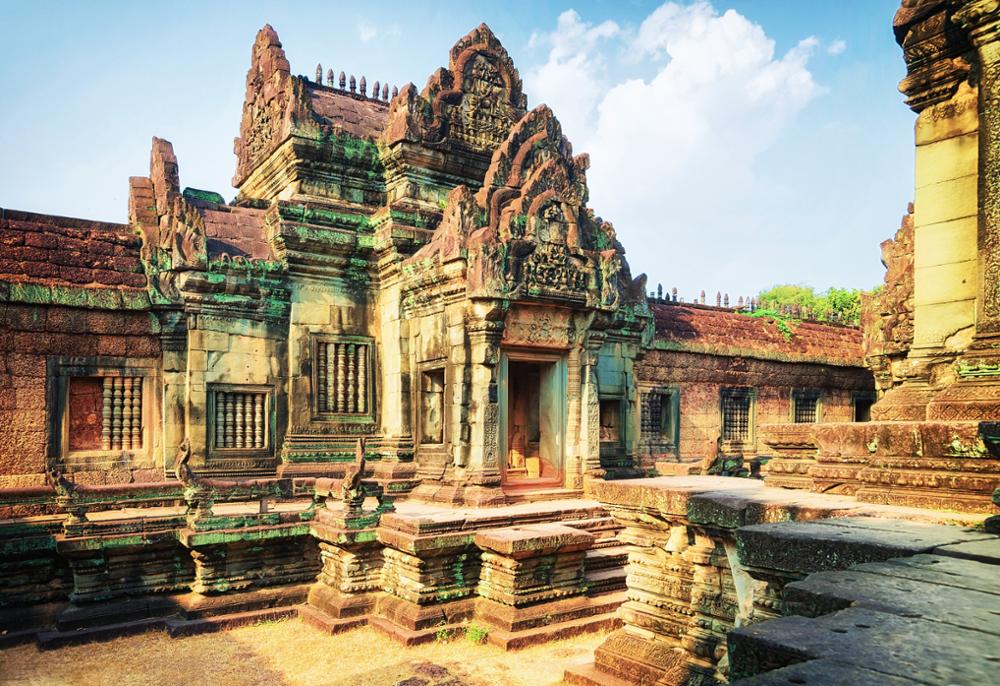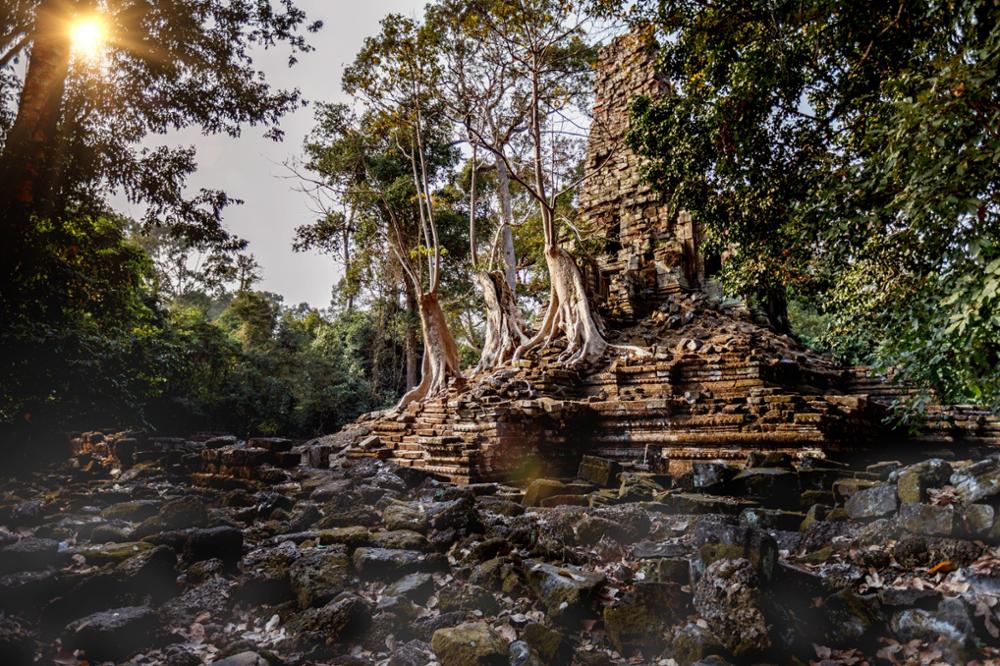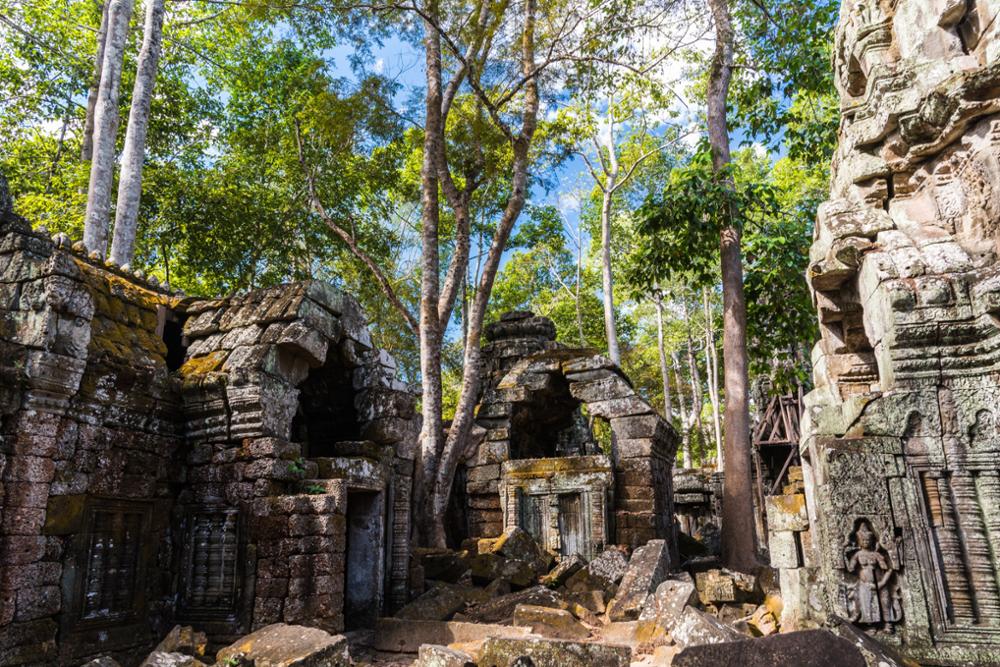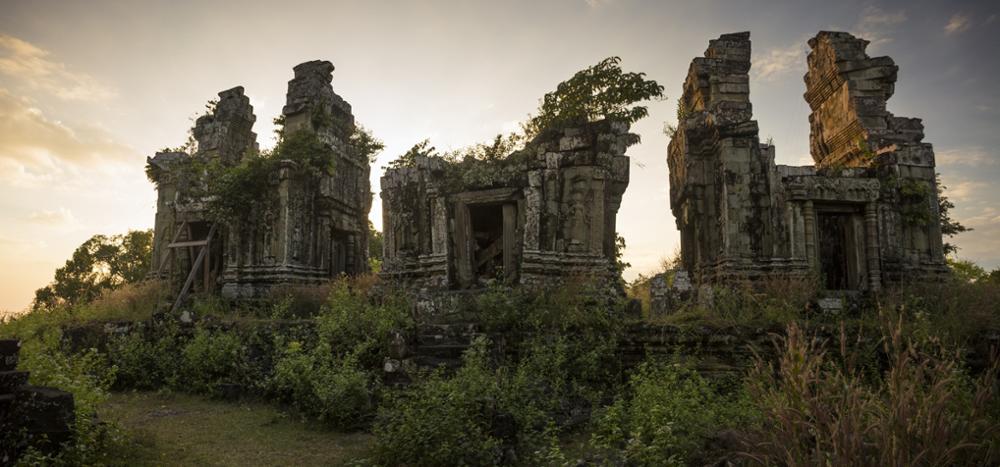
5 majestic temples of Angkor away from the crowds
Although the number of visitors has been decreasing this year, the Angkor archaeological site still attracts countless tourists. For example, 158,000 people visited last August, and 1,650,000 since the beginning of the year have stepped foot in Angkor. This is a positive sign for Cambodia's development, but it can also lead to significant overcrowding. Asian tour operators do not hesitate to send large groups to visit the same temples at the same times of day. As a result, several buildings remain completely deserted, offering a peaceful retreat during your visit to Angkor.
The end of the rainy season is the most opportune time to visit the temples of Angkor in Cambodia, both logistically and climatically. Starting in February, mass tourism picks up in the area, and the intense heat, combined with the absence of rain, can make walking in the full sun difficult. This typically starts around mid-February, in line with the Chinese New Year. The best period for visiting seems to be between mid-November and mid-January. At this time, after the rainy season, the moats and barays surrounding the temples are full, and the surrounding vegetation shows its most beautiful face. It is also the perfect time to encounter few people at the temples mentioned below.
The wonder of Banteay Samre
The mountain temple of Banteay Samre is considered one of the most beautiful buildings at the Angkor archaeological site, alongside Banteay Srei, Bayon, and Ta Prohm. The main difference, however, is that no one visits it. In fact, it is most likely the most beautiful deserted temple in the entire Angkor Basin. Hindu in style, this small fortified city immerses you in the mythical history of the kingdom through its pediments, lintels, and towers. Along with Angkor Wat, it is considered one of the most interesting temples on the site in terms of iconography. It is even recommended to visit it in the morning, as the afternoon light enhances the full grandeur of its beautifully adorned walls.

The nature of Preah Palilay
Preah Palilay is one of the most recent temples built at Angkor. Constructed around the 13th century and of Buddhist origin, it is located a few hundred meters northwest of Phimeanakas. Preah Palilay features one of the best-preserved terraces on the entire Angkor site. The presence of a sanctuary and the dense depiction of the Buddha, alongside elephant statues and two dvarapalas (guardian figures), accentuate the Buddhist nature of the site.

Ta Keo, the unfinished
The temple of Ta Keo, partially built at the end of the 10th century but left unfinished, is surrounded by numerous legends and speculations. The myth suggests that its construction was halted after lightning struck its foundations. The most plausible explanation, however, is that the death of Jayavarman V brought an end to its construction. In any case, the temple was abandoned before the builders could complete the final stages or the artists could begin the wall decorations. The lintels and pediments were carved on-site for each corresponding temple at Angkor. The current view of the structure is unique and highly interesting, as the towers and walls are left bare. Many experts believe that, had Ta Keo been completed, it would have only been surpassed in size and beauty by the grand Angkor Wat.

The basins of Ta Nei
The temple of Ta Nei is located deep in nature, lost in the jungle north of Ta Keo. Due to its isolation, Ta Nei is rarely visited and is consequently a very pleasant place. You will be intrigued by the numerous pediments that adorn the temple’s walls. This temple is unique, as it is surrounded by trees and two water basins, filled by small waterfalls. It provides a calm and refreshing visit.

The stunning view from Phnom Bok
This Hindu temple once housed the heads of Vishnu, Shiva, and Brahma, which are now exhibited at the Guimet Museum of Asian Arts in Paris. You will discover this temple after climbing 600 steps to reach the summit of Phnom Bok Hill. From there, you can enjoy a breathtaking view of the surrounding countryside, 180 meters above the ground.

The interior of the temple is decorated with statues of devatas (female deities) and dancers, and contains four libraries, two of which are made of sandstone. Nature has even grown inside these libraries, creating a beautiful symmetrical effect. Take a moment to step 100 meters to the west to contemplate the immense linga resting on a laterite platform.
